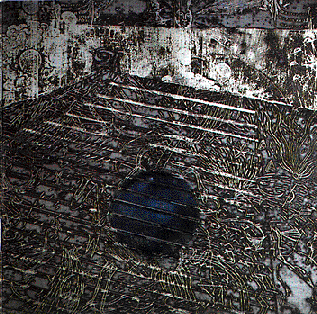| Veljeskunta | ||||
|---|---|---|---|---|
 | ||||
| Studio album by | ||||
| Released | 1991 | |||
| Recorded | 1991 Helsinki | |||
| Genre | Indie rock Hardcore punk | |||
| Length | 38:05 | |||
| Label | Bad Vugum | |||
| Producer | A. W. Yrjänä, Janne Halmkrona | |||
| CMX chronology | ||||
| ||||
| Professional ratings | |
|---|---|
| Review scores | |
| Source | Rating |
| Allmusic | |
Veljeskunta (1991) is an album by Finnish rock band CMX. Its name means "The Brotherhood" in Finnish. [2]

Finland, officially the Republic of Finland, is a Nordic country in Northern Europe bordering the Baltic Sea, Gulf of Bothnia, and Gulf of Finland, between Norway to the north, Sweden to the northwest, and Russia to the east. The capital and largest city is Helsinki. Other major cities are Espoo, Vantaa, Tampere, Oulu and Turku.
CMX, originally Cloaca Maxima, is a Finnish rock band. They originally played hardcore punk, but soon expanded to play a wide variety of rock formats, including progressive rock, heavy metal, and mainstream rock 'n' roll. Throughout their career, they have been influenced by progressive rock bands such as Rush, Yes, Tool and King Crimson. The progressive influence is most evident on their albums Dinosaurus Stereophonicus (2000) and Talvikuningas (2007).

Finnish is a Uralic language of the Finnic branch spoken by the majority of the population in Finland and by ethnic Finns outside Finland. Finnish is one of the two official languages of Finland ; Finnish is also an official minority language in Sweden. In Sweden, both Standard Finnish and Meänkieli, a Finnish dialect, are spoken. The Kven language, a dialect of Finnish, is spoken in Northern Norway by a minority group of Finnish descent.
Contents
The CD version of Veljeskunta also contains the Tanssitauti EP originally published in 1990. The gold version of the album, released in 2002 also contains CMX's earlier EP, Musiikin ystävälliset kasvot .

Tanssitauti is an EP by CMX released in 1990. The band had released their debut album Kolmikärki earlier the same year with a different lineup. Tanssitauti is the first CMX recording to feature guitarist Janne Halmkrona, who appears on all of the band's albums from this point on.

An extended play record, often referred to as an EP, is a musical recording that contains more tracks than a single, but is usually unqualified as an album or LP. Contemporary EPs generally contain a minimum of three tracks and maximum of six tracks, and are considered "less expensive and time-consuming" for an artist to produce than an album. An EP originally referred to specific types of vinyl records other than 78 rpm standard play (SP) and LP, but it is now applied to mid-length CDs and downloads as well.

Musiikin ystävälliset kasvot is an EP by CMX. It was recorded in 1991 to be released as a four song EP, but instead the title track was released as a single. The EP was finally released in 1998 under the name Musiikin ystävälliset kasvot + 5 and included six songs. The originally planned four song EP was released in 2002 as a part of Veljeskunta Gold.


















